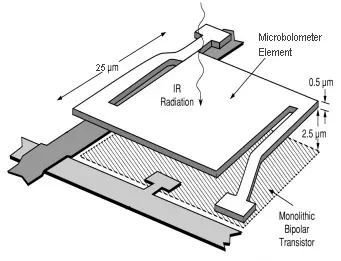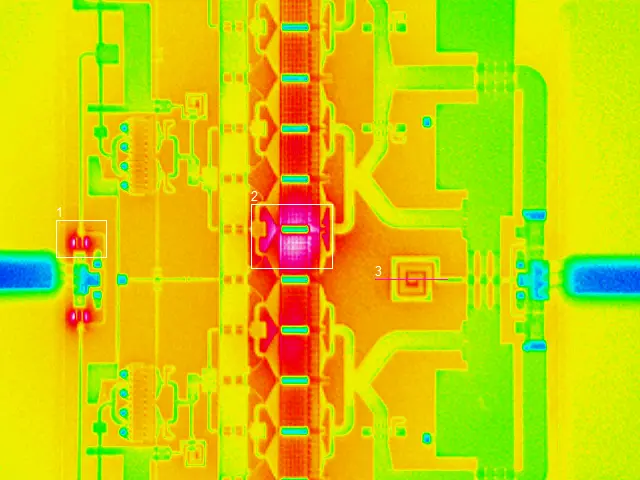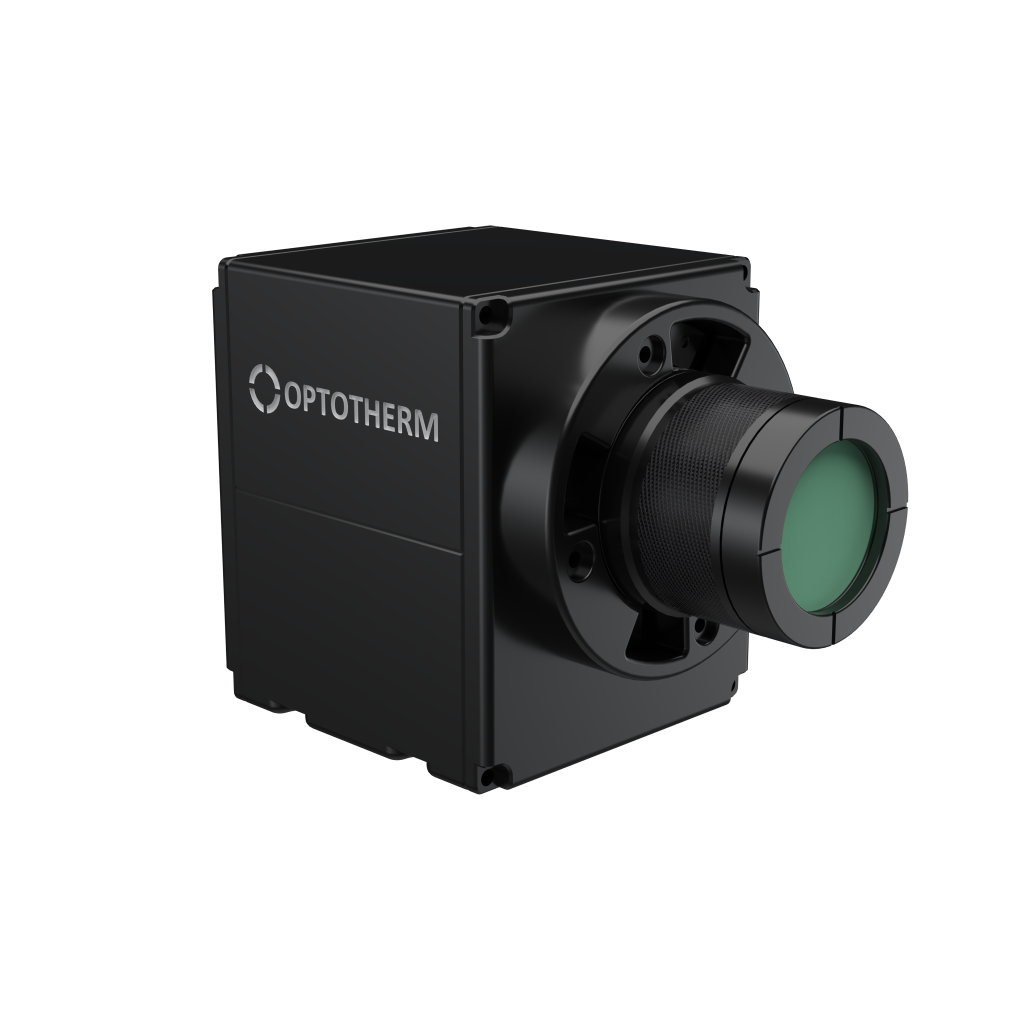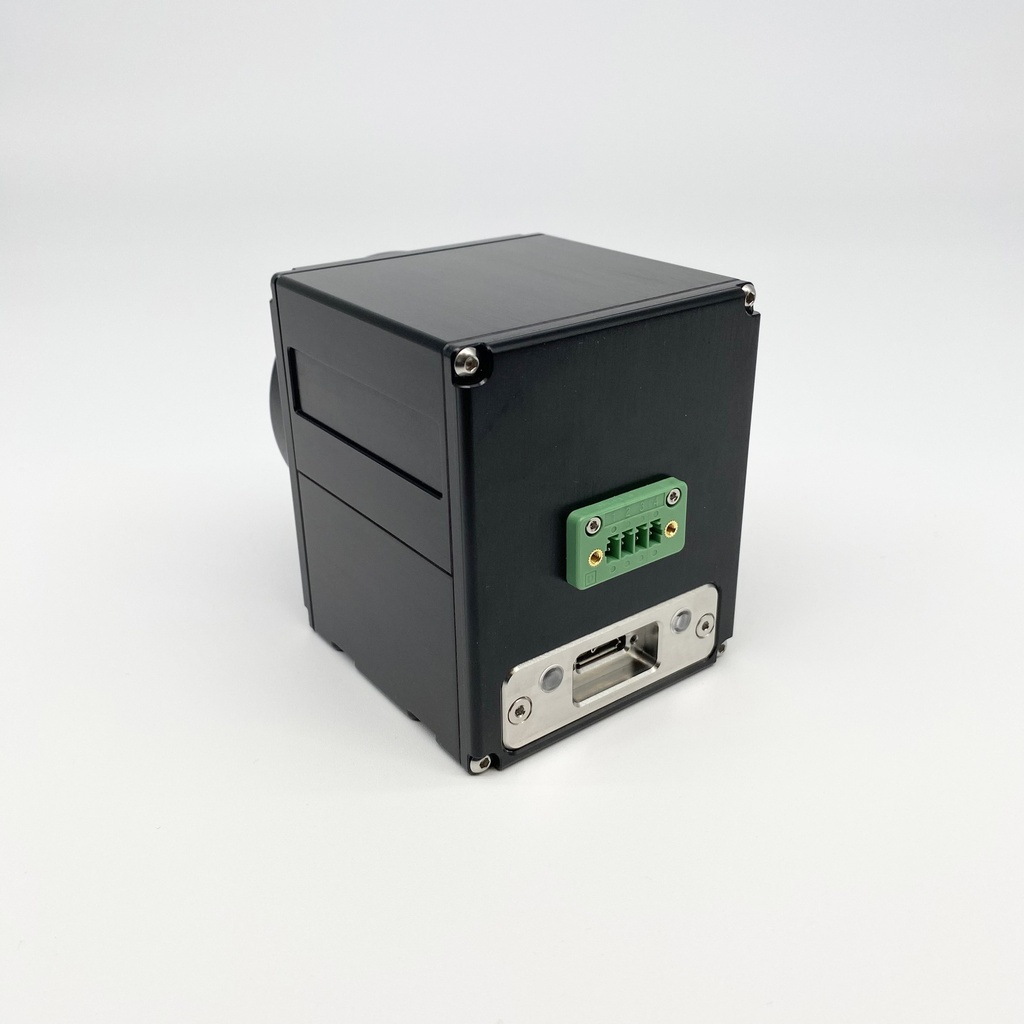Overview
Infrasight cameras contain an infrared detector called a microbolometer. A microbolometer is an array of tiny heat detecting sensors that are sensitive to infrared radiation from approximately 7 to 14µm in wavelength. Each array element is approximately 17 x 17µm in dimension.

As infrared energy strikes an individual bolometer element, the element increases in temperature, and its electrical resistance changes. This resistance change is measured and then processed into temperature values which can be represented graphically in a thermal image.

A microbolometer is an uncooled infrared sensor; the detector array does not need to be cooled in order to produce highly sensitive thermal images. Photon detectors, such as InSb (Indium Antimonide) and MCT (Mercury Cadmium Telluride) infrared detectors, can improve thermal sensitivity but require the detector to be cooled to cryogenic temperatures utilizing cooling methods such as Stirling cycle engines and liquid nitrogen. The use of photon detectors increases the cost of infrared cameras, decreases ease-of-use, and leads to more frequent and expensive maintenance.
Applications
- Semiconductor device failure analysis
- Circuit board failure analysis
- Microscopic temperature measurement and analysis of materials
Features
Comprehensive Calibration
Each camera undergoes a rigorous calibration procedure over the span of several days to precisely correlate detector response to temperature measurement.
Compatible Lenses
Specifications
Detector
Infrared Detector | uncooled vanadium oxide microbolometer |
Array Size | 640 x 480 pixels |
NETD* (f/# 1 optics) | < 30 mK (< 12 mK with ≤9 Hz option †) |
Detector Pitch | 17 µm |
Spectral Response | 7-14 µm |
Thermal Time Constant | < 11 ms |
Camera Control and Image Output
Frame Rate | 60 Hz (≤9 Hz option †) |
Camera Control | USB3 ‡ |
Thermal Image Output | USB3 ‡ |
Time to First Image | < 4 seconds |
Power
Input Voltage | +5V over USB3 |
Power Consumption | < 1.4 Watts |
Physical
Ambient Operating Range | 15 to 35°C |
Ambient Storage | -45 to 70°C |
Camera Dimensions | 75 x 90 x 77.5 mm |
Camera Weight | 0.75 kg |
Camera Mounting | 2 x M6 on 25 mm centers with quick mount |
Moving Parts | None, Software fixed-pattern noise reduction |
* Noise Equivalent Temperature Difference (NETD) specifies the smallest temperature difference that can be detected. The value stated is NETD at 60 Hz frame rate.
† Optotherm thermal imaging cameras with frame rate of 9Hz or lower may be exported to many countries without an export license under ECCN 6A993.a NLR (no license required).
‡ Camera models using Camera Link are only compatible with Windows 10 Operating System. Camera models using USB are compatible with both Windows 10 and Windows 11 Operating System.
Setup, Operation, & Maintenance
Additional product resources are linked under Documents at the bottom of this webpage.
Troubleshooting
Click the link below to view the Support Forum posts for this topic.
https://www.optotherm.com/forum/support-1/tag/is640-17-33/questions?filters=tag



